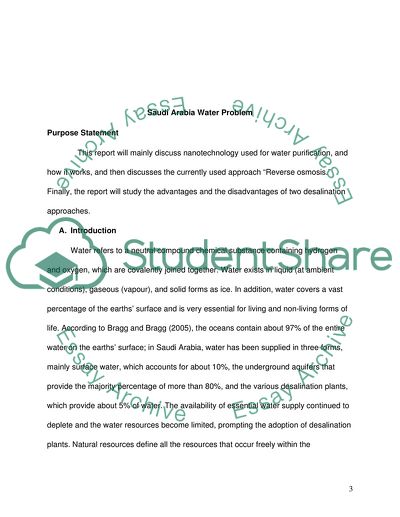Cite this document
(Saudi Arabia Water Challenge Term Paper Example | Topics and Well Written Essays - 1250 words - 1, n.d.)
Saudi Arabia Water Challenge Term Paper Example | Topics and Well Written Essays - 1250 words - 1. Retrieved from https://studentshare.org/environmental-studies/1752710-saudi-arabia-water-problem
Saudi Arabia Water Challenge Term Paper Example | Topics and Well Written Essays - 1250 words - 1. Retrieved from https://studentshare.org/environmental-studies/1752710-saudi-arabia-water-problem
(Saudi Arabia Water Challenge Term Paper Example | Topics and Well Written Essays - 1250 Words - 1)
Saudi Arabia Water Challenge Term Paper Example | Topics and Well Written Essays - 1250 Words - 1. https://studentshare.org/environmental-studies/1752710-saudi-arabia-water-problem.
Saudi Arabia Water Challenge Term Paper Example | Topics and Well Written Essays - 1250 Words - 1. https://studentshare.org/environmental-studies/1752710-saudi-arabia-water-problem.
“Saudi Arabia Water Challenge Term Paper Example | Topics and Well Written Essays - 1250 Words - 1”, n.d. https://studentshare.org/environmental-studies/1752710-saudi-arabia-water-problem.


